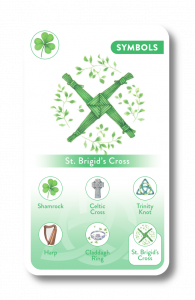Who was Brigid?
Who was St. Brigid and where does the St. Brigid’s Cross come from?
Brigid, or Bridget or Bride, is a goddess of ancient Ireland who was revered for her many powers and attributes.
Associated with light, healing, poetry and smithcraft, she was Ireland’s first environmentalist, a passionate protector of nature and carer of animals and all living things.
On the 1st of February each year her feast day, Imbolc, is celebrated and marks the beginning of spring in the Celtic calendar.

It is believed that the Christian Saint Brigid of Kildare, is a Christianisation of the goddess Brigid, as both share many similar attributes and stories.
The Goddess Brigid
Brigid is a goddess of the Tuatha Dé Danann, an ancient race of Irish gods and goddesses. She is a triple goddess, representing the three aspects of the mind, body, and spirit.
Brigid’s most striking attribute is her strong and empowering femininity. She embodied the strength and grace of women, and her followers looked to her for guidance and inspiration.
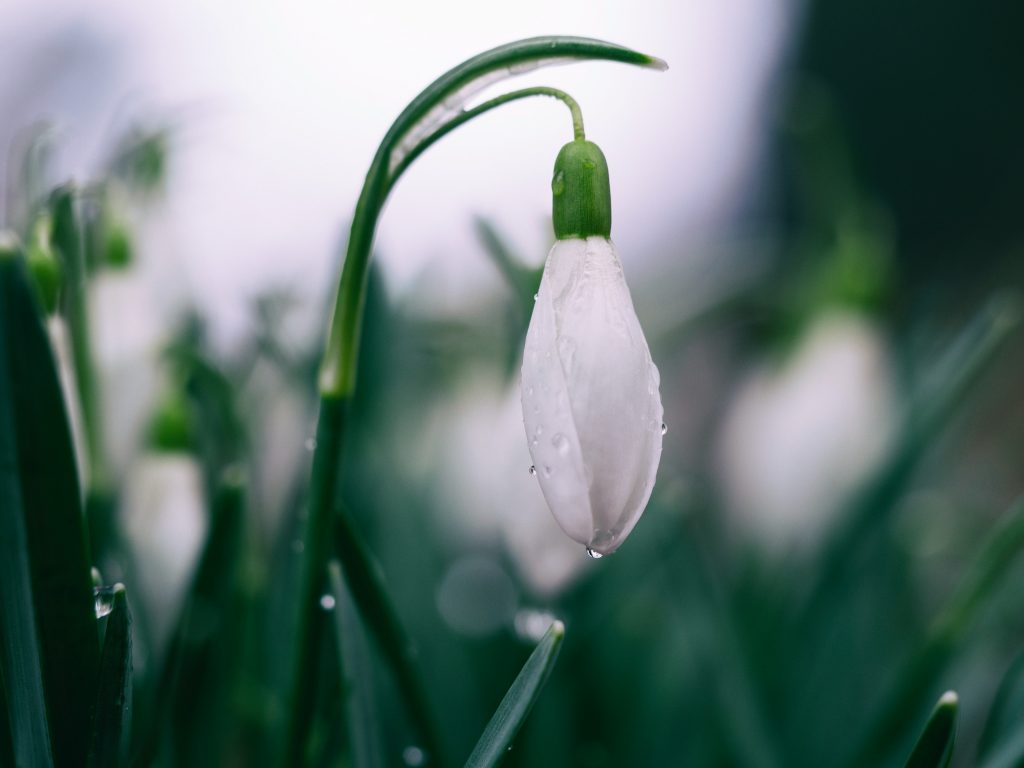
As a protector of women and children, she was thought to have the power to heal and to bring fertility.
She is also associated with the hearth and is believed to bring warmth and light to people’s homes.
Imbolc
The feast of Imbolc, also known as Imbolg or St. Brigid’s Day is celebrated on the 1st of February and marks the beginning of spring.
It is a time when the land begins to awaken from its winter slumber and new flowers begin to bloom.
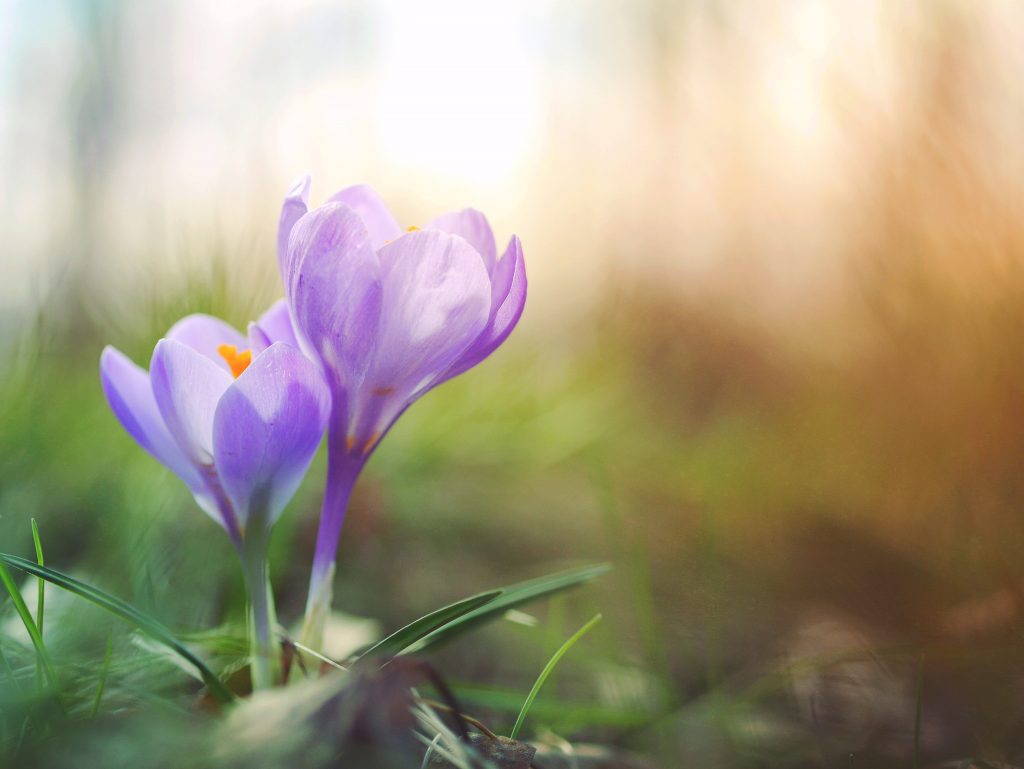
The goddess Brigid is closely associated with Imbolc and is often seen as the embodiment of the springtime energy.
As the goddess of fertility she is said to be responsible for the growth of new crops and the birthing of animals.
St. Brigid of Kildare
St. Brigid of Kildare is a Christian Saint who is believed to have been born around 450 AD. She is well known for her kindness, generosity and healing powers.
She is said to have been born at the same time as the goddess Brigid and is often considered to be her Christian counterpart.
St. Brigid is known for her work with the poor and her establishment of a monastery in Kildare, Ireland which was known for its high-quality education and its scriptorium.
The St. Brigid’s cross
One of the most iconic symbols of Brigid is the St. Brigid’s Day cross. This craft has been passed down through the generations, and it is said to bring good luck and protection to the home where it hangs.
The crosses are typically made from rushes, and they are often hung in the home above a doorway to protect it from fire, hunger and evil.
The story behind the St. Brigid’s cross
Legend has it that St. Brigid was called to the bedside of a dying pagan Chief (possibly her father) to calm his restless spirit.
As she sat next to him consoling him, she picked up rushes from the floor and began weaving them into the shape of a cross.
As she wove, she explained the teachings of God and the meaning of the cross. Her words brought such peace to his soul that the chieftain requested to be baptised before his death.
News spread of St Brigid’s kindness and faith and the dying chief’s conversion to Christianity. The making of the cross has since become a symbol of St. Brigid.
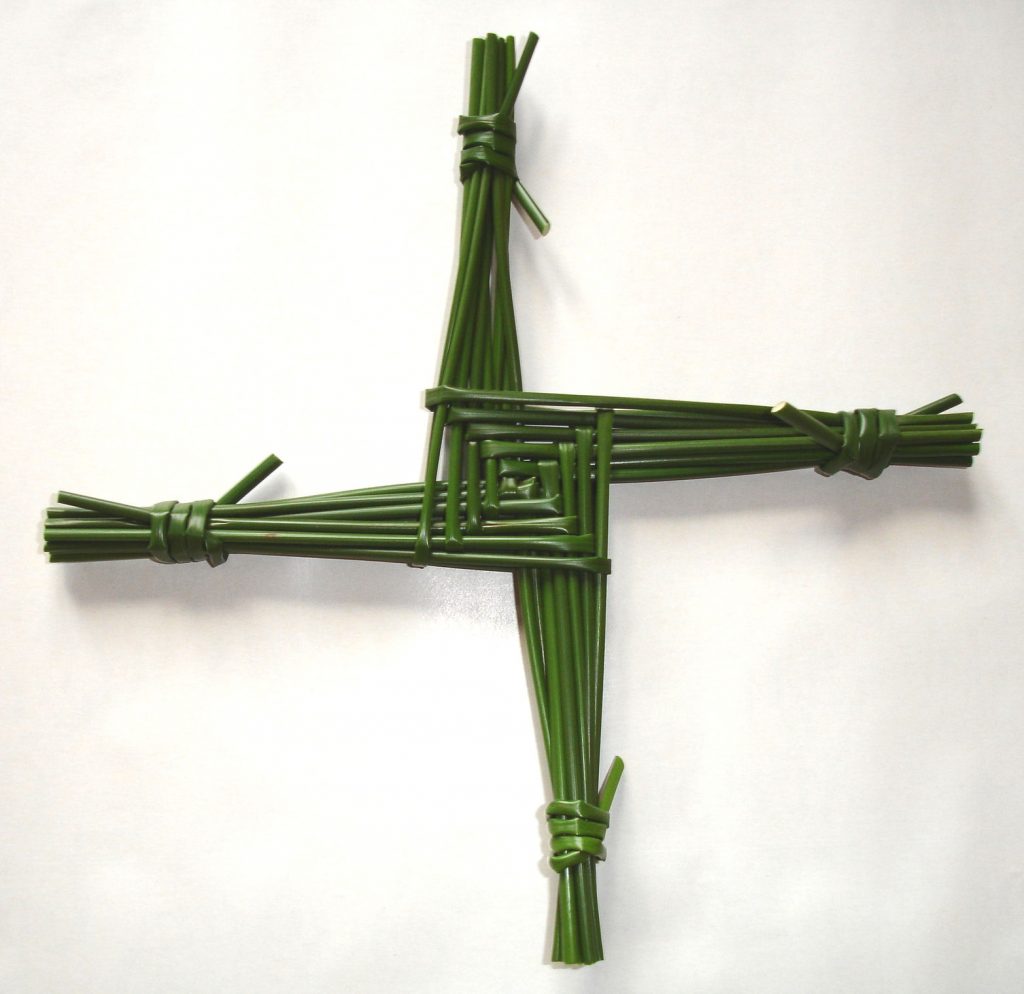
How to make a St. Brigid’s Cross
As a child I have fond memories of going to gather rushes with my aunt (who was named in honour of Brigid). She taught us how to make these beautiful crosses and we hung them proudly in our homes.
Making crafts at all ages brings a variety of health benefits. It has shown to improve mental agility, to work both gross and fine motor skills, and also decrease cognitive decline.
It’s worth making time to sit around a table and make something together as a family or with friends.
If, like me this year, you don’t have access to rushes, why not use paper straws or pipe cleaners? For the purpose of these instructions I’ll show you how to make a cross using pipe cleaners. : )

To make a St. Brigid’s cross, you will need:
- Rushes (or paper straws or pipe cleaners if you don’t have rushes)
- Scissors
- Twine or string
Instructions:
1 Gather a bundle of rushes or whatever you have.
2 Cut them an equal length, about 30 or 40 cm depending on how big you want the cross to be.
3 Hold one of the rushes vertically. Fold a second one in half and wrap it around the first rush.
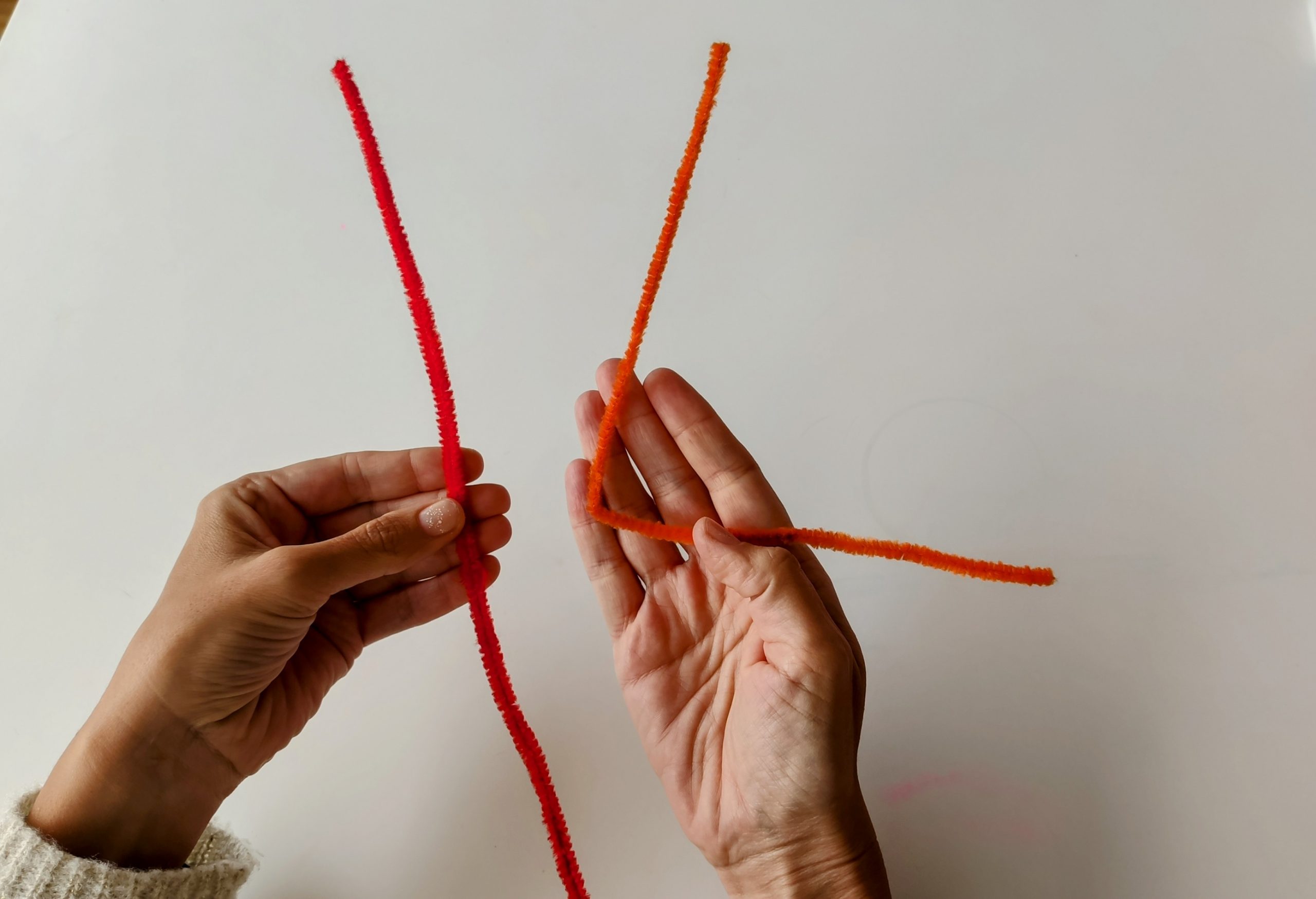
4 Hold the middle overlap tightly between your thumb and forefinger.

5 Turn the two rushes held together 90 degrees in an anti-clockwise direction so that the open ends of the second rush are pointing vertically upwards.
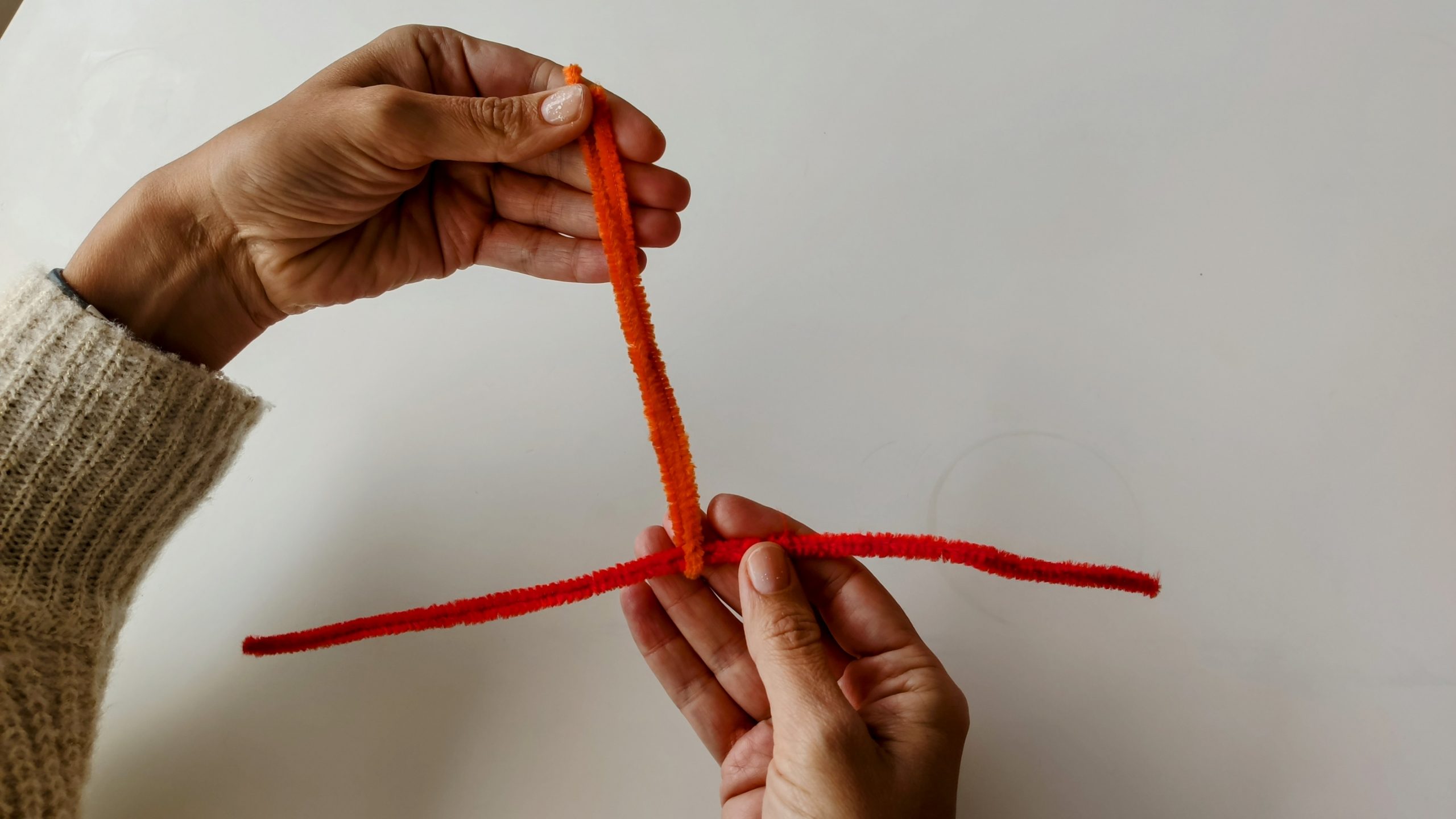
6 Fold a third rush in half and over both parts of the second one to lie horizontally from left to right against the first rush. 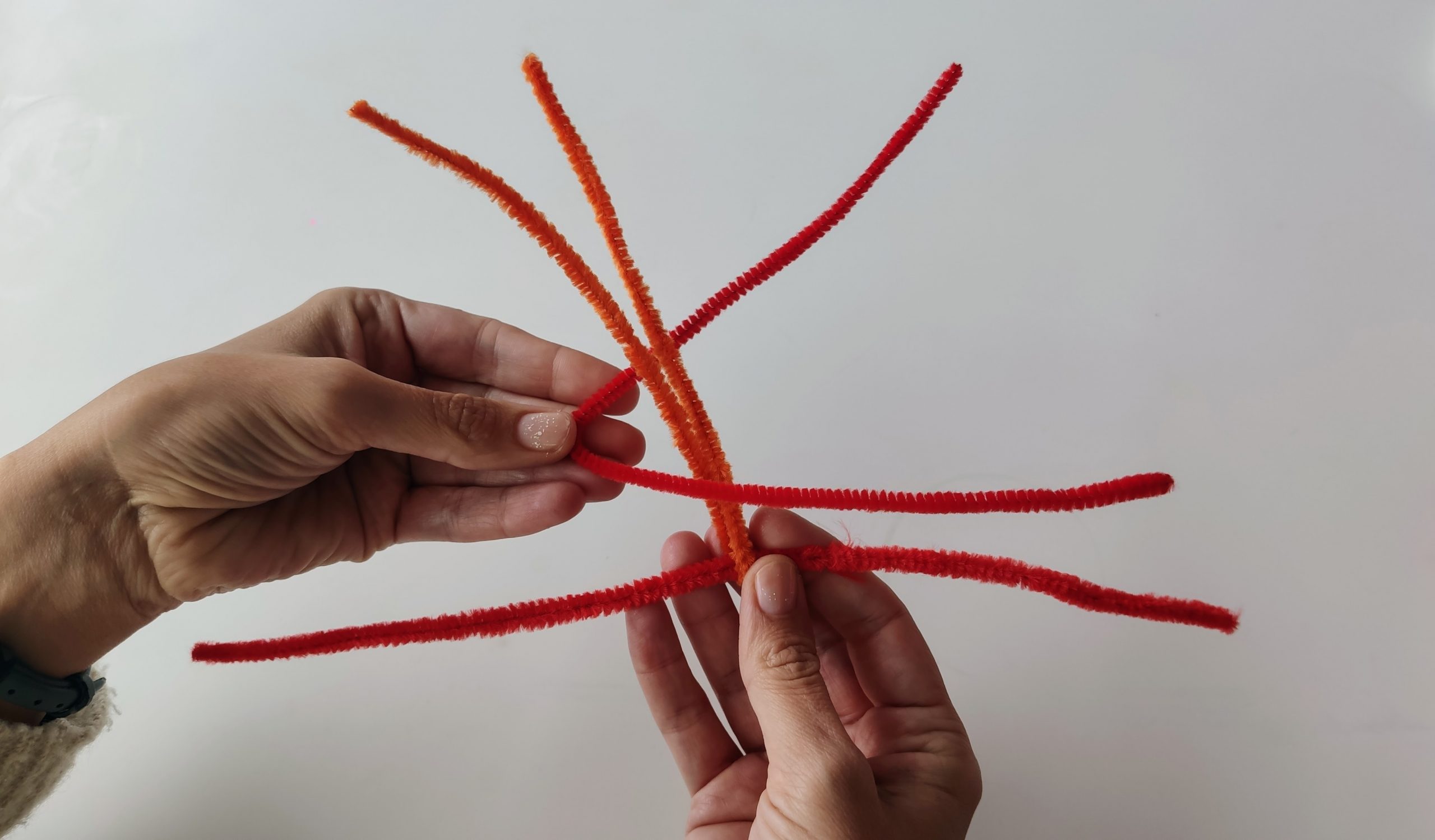
7 Holding the middle tightly, turn the three rushes 90 degrees in an anti-clockwise direction so that the open ends of the third rush are pointing upwards.
8 Fold a new rush in half over and across all the rushes pointing upwards.
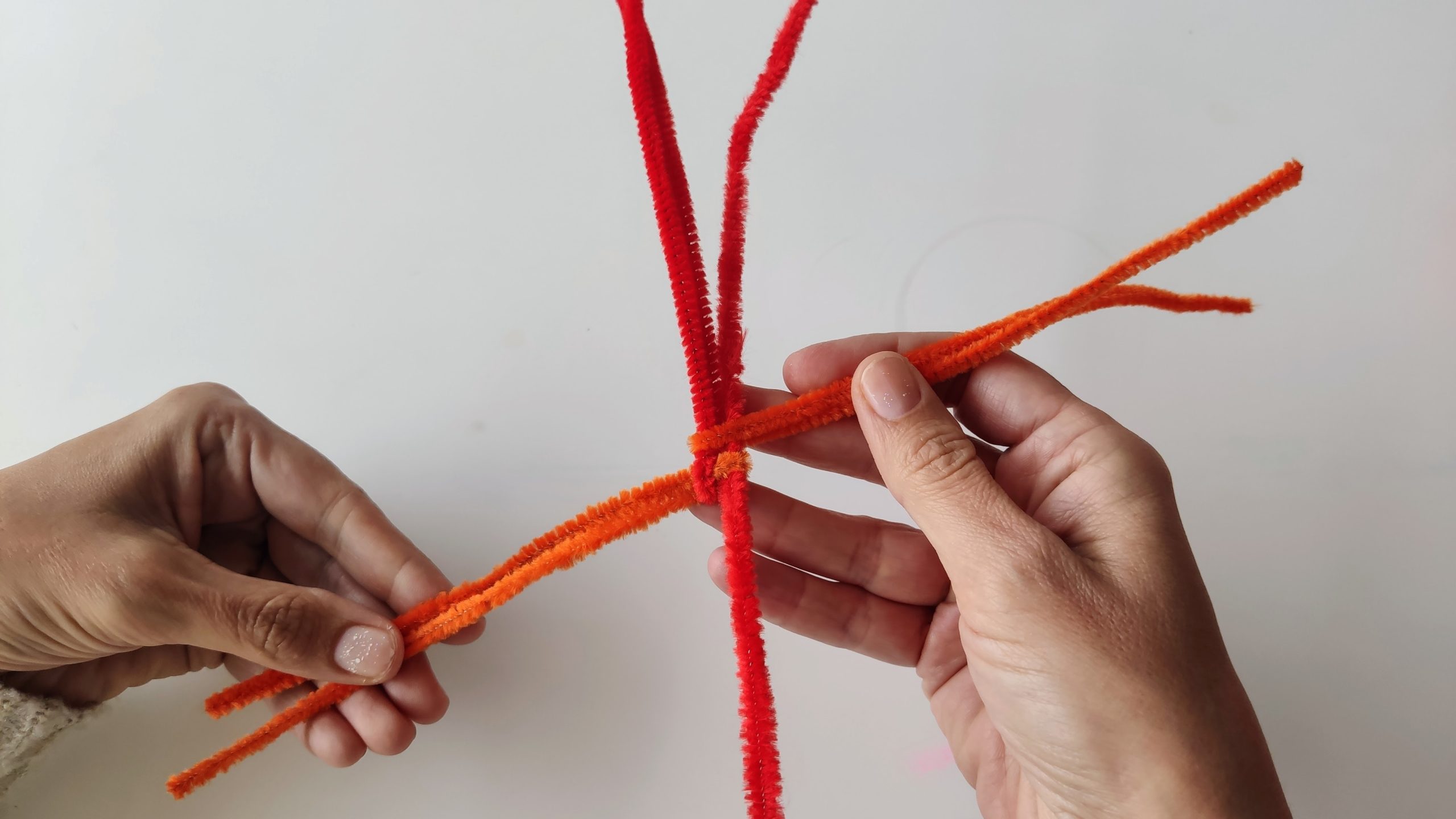
9 Repeat the process every time you add a new piece, turn it anti-clockwise once and keep building on the pattern until you are happy with the size.
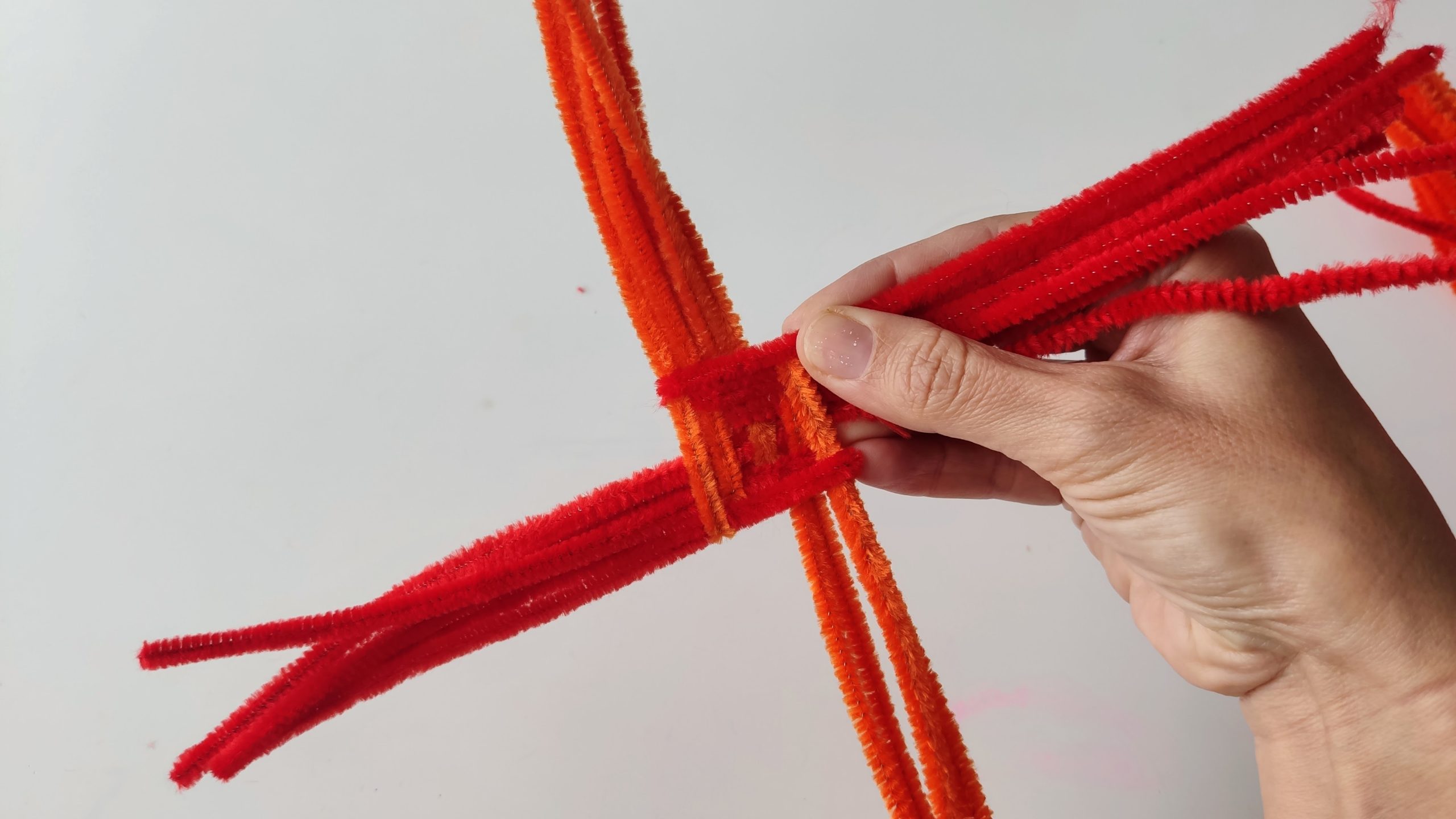
10 Before placing the final rush, loosen the last piece you placed and thread the final rush through it.
11 Then pull it tight. This will hold the hold the whole thing together.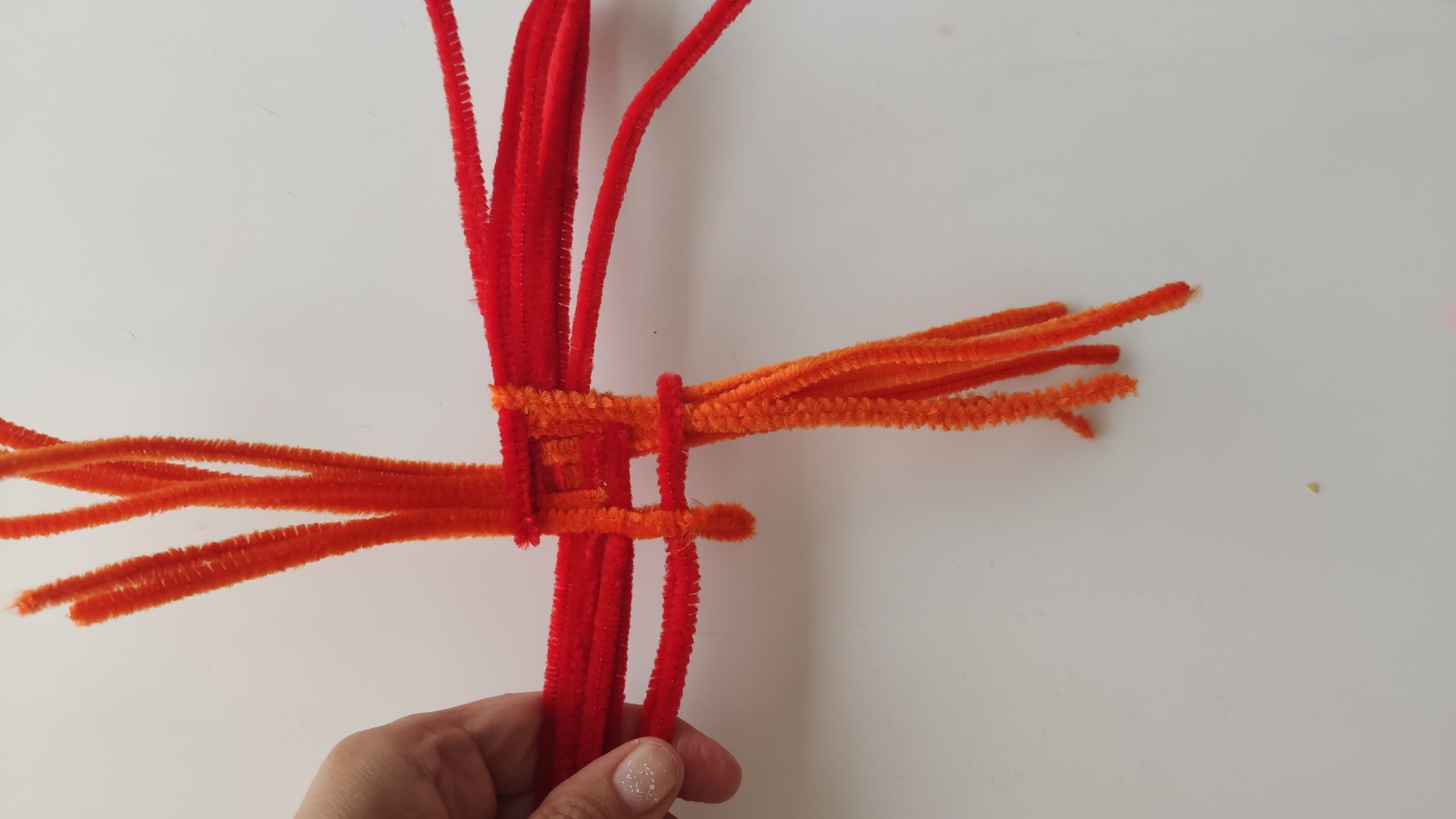
12 Now tie and trim the ends, and place your beautiful new St. Brigid’s cross in a special place in your home.
Brigid: A Symbol of Empowerment
Brigid, goddess of ancient Ireland, is a powerful symbol of empowerment, femininity, strength, and grace.
Making a St. Brigid’s cross on her feast day Imbolc is a wonderful way to honor her and connect with her energy.
Whether you’re looking for protection, healing, or inspiration, Brigid is a goddess who can offer all of these things and more.
St. Brigid’s Day: A new national holiday
In 2023, Ireland announced a new national holiday and the first in honour of a woman. Brigid, our matron saint, Celtic goddess, an icon and role model for our times and a celebration of all women!

Happy Families – Exploring Ireland card game
The St. Brigid’s cross features in our new card game about Ireland “Happy Families – Exploring Ireland” where you can learn about more of the beautiful symbols, landmarks, mythology, cities, food and music that represent our little island.
